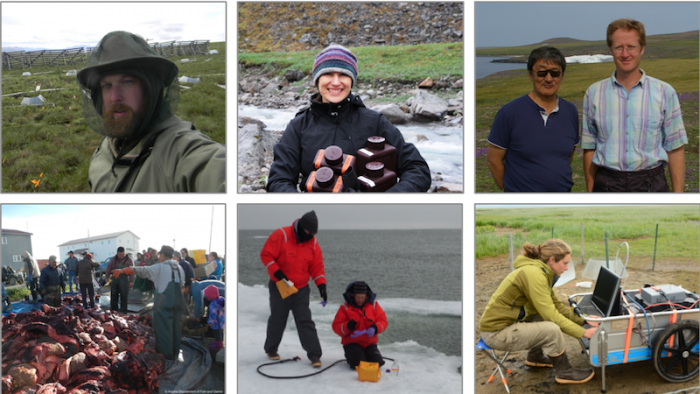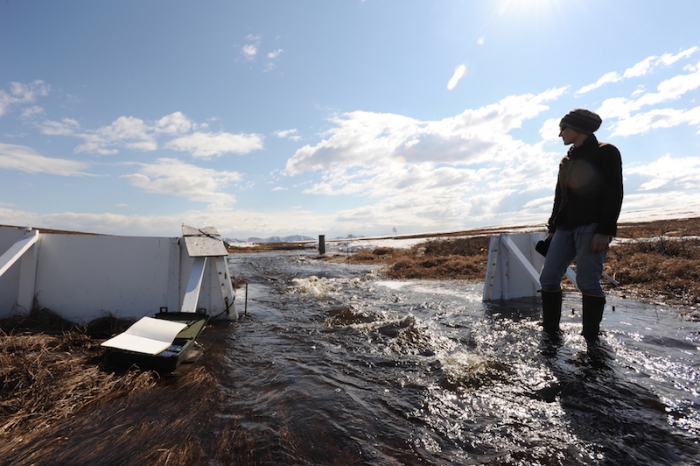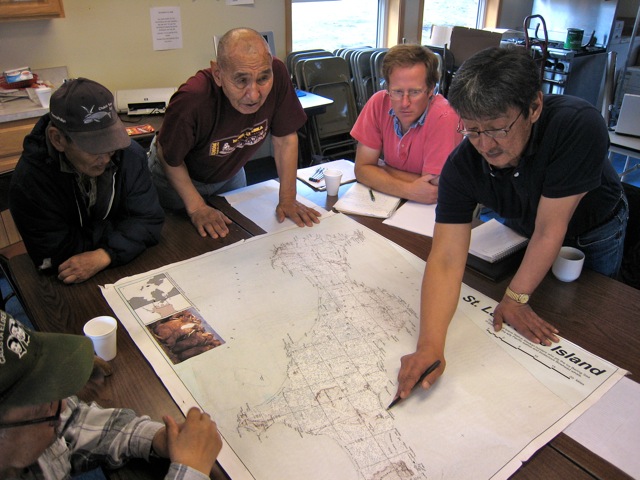By: Kathryn Meyer, Community Engagement and Outreach Coordinator, NSF Arctic Data Center
What do soil bacteria activity under deep snow cover, the habitability of fragile rotten ice, and Indigenous Knowledge on hunting practices have in common? Not only are they all research projects from the Arctic region, they are also all projects that have data in the Arctic Data Center repository. With the vast quantities of data being produced by Arctic research, it could be easy for these data to get stuck on the proverbial digital shelf.
The Arctic Data Center is responsible for helping the Arctic research community reproducibly preserve and discover all products, including data, of NSF-funded science in the Arctic. The Arctic Data Center repository portal provides access to over 5,130 datasets, but how can the community delve deeper into the purpose of each project and highlight the researchers behind the data?
The Arctic Data Center aims to better share these aspects of the data to the community through our recently established Dataset Highlights page. Each Dataset Highlight provides insights directly from the researchers, including how their data might be applied to other questions in support of Arctic research. Six datasets have been highlighted so far. Ranging across Arctic research disciplines, the highlights bring the data to life in context with project details, questions and answers with the researchers, and photographs of the researchers and their Arctic field sites.

The inaugural Dataset Highlight, for example, shared the research of Michael Ricketts and his team studying how soil bacteria act under deep snow cover. Ricketts' use of the Arctic Data Center's provenance tool, displaying the relationships between data inputs, processing, and products to help ensure data reproducibility, was another unique aspect of his dataset.

Highlighted datasets have run the spectrum of Arctic research, ranging from Dr. Cory's Arctic river water chemistry to Dr. Fall's changes to Indigenous subsistence harvests, and allow for the community to learn about the span of Arctic research topics with data in the Arctic Data Center. A dataset from Henry Huntington, George Noongwook, and their colleagues' work exploring local communities' responses to ecosystem change in the Bering Sea, "Learning from the Hunters in Savoonga" was the first social science dataset to be highlighted. A related dataset is from the "Savoonga Field Report for the Local and Traditional Knowledge component of the Bering Sea Integrated Ecosystem Research Program (B69)"(see photo below). The number of social science datasets in the repository is growing.

An added bonus of the highlights has been additional media and resources shared by the researchers. Karen Junge's highlight shares data from her team's pioneering investigation of rotten ice and includes videos published by the Applied Physics Laboratory at the University of Washington. These videos transport readers to the team's field sites where they can learn about the project directly from the research team. The latest highlight of Kathy Kelsey and her team studying phenological mismatch includes a video of life at their remote field camp along the Tutakoke River in Alaska.
Dataset Highlights are an exciting new resource for the Arctic community to learn about the research happening throughout the region and the data available to fuel further research. The Arctic Data Center is looking forward to continuing the highlights and reaching more of the Arctic community. If there is a specific dataset in the Arctic Data Center repository that you want to learn more about, let us know! Email training [at] arcticdata.io with your request.
More information is available on the Arctic Data Center webpage.
Author
 Kathryn Meyer is the Community Engagement and Outreach Coordinator working with the Arctic Data Center. Photo courtesy of Kathryn Meyer.
Kathryn Meyer is the Community Engagement and Outreach Coordinator working with the Arctic Data Center. Photo courtesy of Kathryn Meyer.
